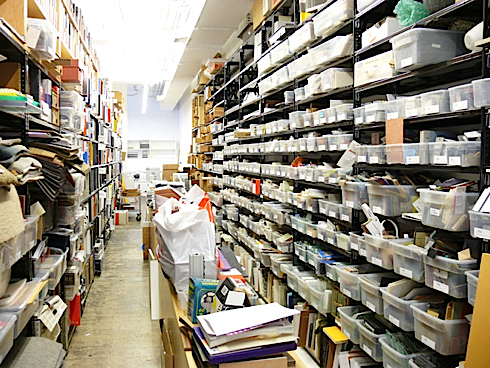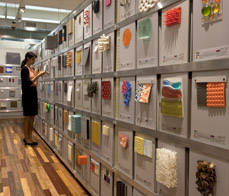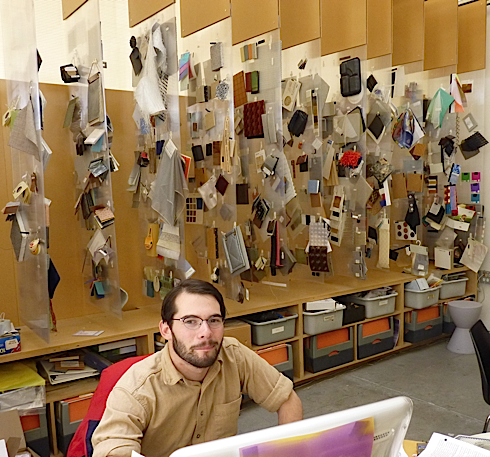Material Libraries
There are thousands of types of materials to make things from. The first impulse for most of us is to ...
There are thousands of types of materials to make things from. The first impulse for most of us is to use known materials like wood, steel, concrete, and glass. But each of those have hundreds of varieties, each with their own properties. How about metallic ceramics? And every year brand new materials are invented. How can one find out what materials are available?
One way to become familiar with the vast possibilities of materials is to visit a materials library. That’s what professional designers and architectures do when embarking on a project. Maybe what they design can be made of some kind of glass? Or super strong plastic? Or bendable wood? Larger design firms have their own material collection, which they use for inspiration, research and for sharing with clients. Below is an unusually large material library at the New York City architecture firm 1100: Architect. Smaller ones can be found at most design firms.

Not everyone has the space or time to build their own. So Material Connexion is a commercial business operating in 8 major design-center cities of the world. For a subscription fee you can use their extensive material library. They add about a dozen new materials per month. A fair number of university art centers also use them to install and manage their collections.

Art, architecture and design centers in colleges and universities have begun creating material libraries that rival the depth and usefulness of book libraries. Notable collections include Harvard’s Materials Collection and RISD’s Material Resource Center in Providence, RI. At both you can check out a sample to study, just like a book:
To Borrow Items from the Material Resource Center
Select items from the shelves and bring them to the checkout desk.
Materials circulate for 7 days at a time. Please return materials promptly – an overdue fine of .20 per 5 items will be charged.
The Materials Lab at the University of Texas was the pioneer in creating material libraries several decades ago. Their own library contains 25,000 different types of materials. Even better, the catalog of the Material Lab is openly available online. It’s organized by domain and even though you can’t touch them, you can learn a lot by browsing and searching. You can quickly see, say, how many different types of concrete blocks are available, or how many types of metallic glass, or plywood laminates.
Chances are that if there is a art/design college near you, they have a material library that you could at least visit. The local art college in my neighborhood is the California College of the Arts in San Francisco. I visited their materials library, which is small, but stimulating. Here the librarian oversees the collection. I was free to browse it.

Even better, it is not hard to accumulate your own collection of materials, or even start a shared library with friends and colleagues. It is not just the pieces of stuff that is valuable, but the information about the stuff — its specs, what it can do, or not do, where it comes from, how to get more of it.
01/26/12Material Connexion Materials Database Individual online subscription $250/year University of Texas, Austin Materials Lab online catalog, free California College of the Arts Materials Library openly accessible, but non-circulating online database, free











